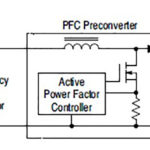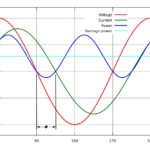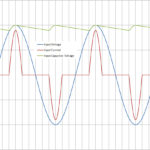Ron Stull of CUI explains what power factor is, how it affects efficiency calculations and how it is measured
With today’s concentration on energy savings, design engineers need to know with increasing accuracy what their ac-dc power converter efficiency is. Measuring the ratio of output power to input power is simple for dc-dc converters, but when the input is ac, the current is not always in phase with the voltage and may be far from a perfect sinusoid. As a result, a watt meter, simply measuring rms current and voltage, will certainly give a pessimistic reading. A measure of the phase shift and distortion of the current waveform is Power Factor (PF), with components referred to as ‘Displacement’ and ‘Total Harmonic Distortion’ (THD), represented by the three-dimensional ‘power triangle’ for non-linear systems.
When Displacement and THD are quantified, a true power factor can be evaluated and factored into an efficiency calculation to give accurate results. With ac-dc power supplies, the power factor can be so bad as to show half the true efficiency without correction to the calculations. Higher power ac-dc power supplies invariably have some form of Power Factor Correction (PFC) but still need careful measurements of residual distortion to show compliance with international standards for harmonic current distortion and the last decimal points of efficiency accurately.
In this CUI Insights blog, Ron Stull discusses the reasons for bad PF, how calculations for efficiency are corrected and how power analyzers make measurements easy.





Leave a Reply